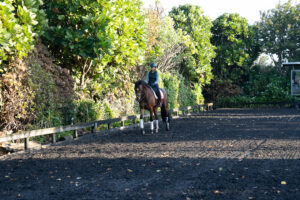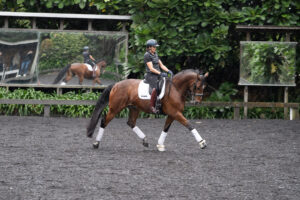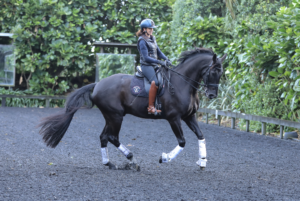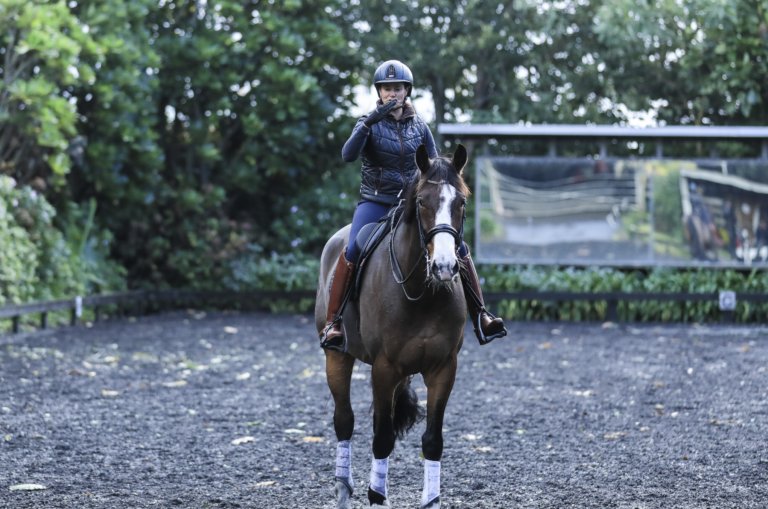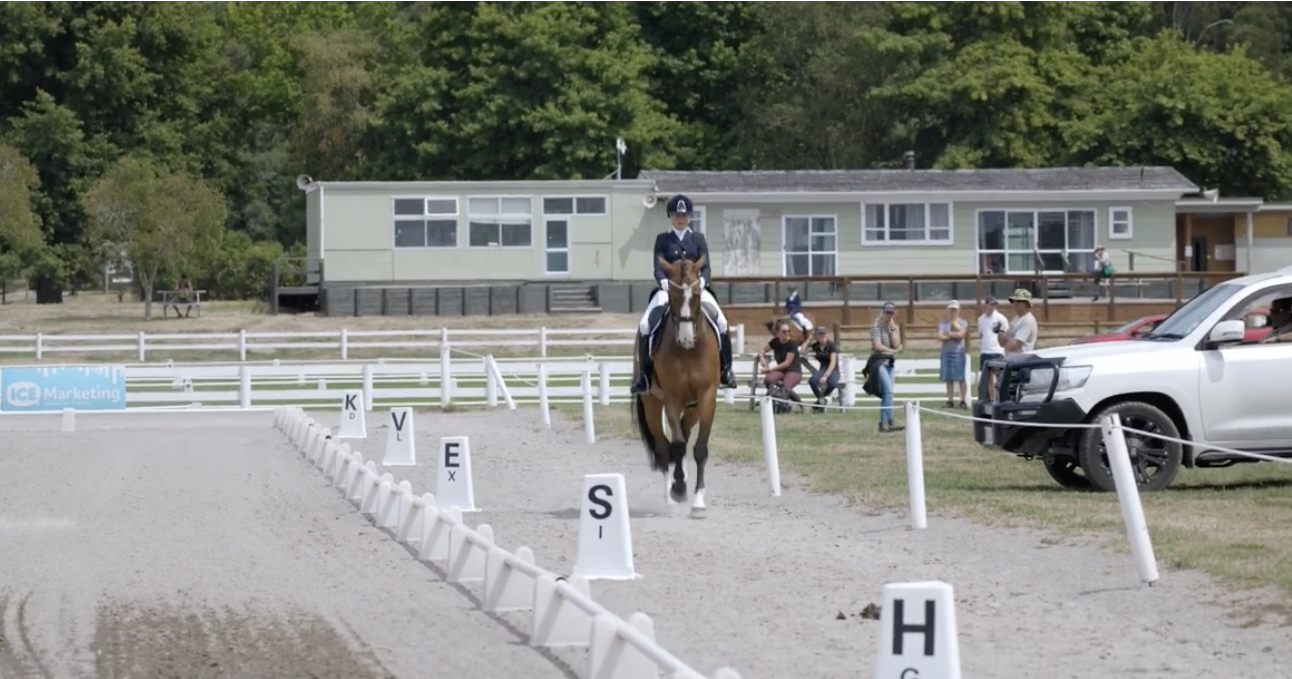Vanessa Way shares with us her journey to learn from Klaus Balkenhol
The image of jet-setting across the world, sampling fine wine and cuisine, while viewing the latest movie releases may, for many, create an illusion of “pure pleasure”. However, I recently had that experience, and found that, after enduring 27 hours wedged between perspiring strangers, pure pleasure was redefined for me in the form of an upright position, with circulation returning to my feet.
With time travel aside, and circulation restored, Andrea Raves (my trainer) and I finally disembarked gratefully, if somewhat stiffly, upon the German (Düsseldorf) soil. Impersonating the entire “Sky Sports Team” with cameras taped to my torso, the time had come to discover and unleash the secrets behind the success of one of the best dressage trainers in the world, Claus Balkenhol.

Our timing was to be perfect, with the American Team of Riders based at Balkenhol’s in preparation for the final of the Volvo Dressage World Cup. Studying the combinations and training, followed by the actual competition, clearly demonstrated for the observer the difference in outline whilst training, compared to the desired final outline achieved during the test.
HALT!
Before the Balkenhol experience continues let me bring to your attention that the following information has been obtained (at great expense) through personal interviews, lectures, observation, and hours of video footage. I welcome you on a journey through my eyes into the world of a dressage master who genuinely believes that one lifetime is far too short to stop learning from our equine partners. Although there are many different roads to Rome, and many views of that city when one arrives, I will share with you my perceptions of the concepts and personal views that have created a dressage legend.
Highlighted throughout Balkenhol’s instructions was the strict attention paid to the principles of the German training scale: rhythm, suppleness, contact, straightness, impulsion, and collection. These were constantly scrutinised in relation to all exercises, transitions, and movements. Balkenhol demanded total perfection in relation to the rhythm, contact and straightness regardless of the level of training. Perfect rhythm within the transition held more importance than the quality of the steps.
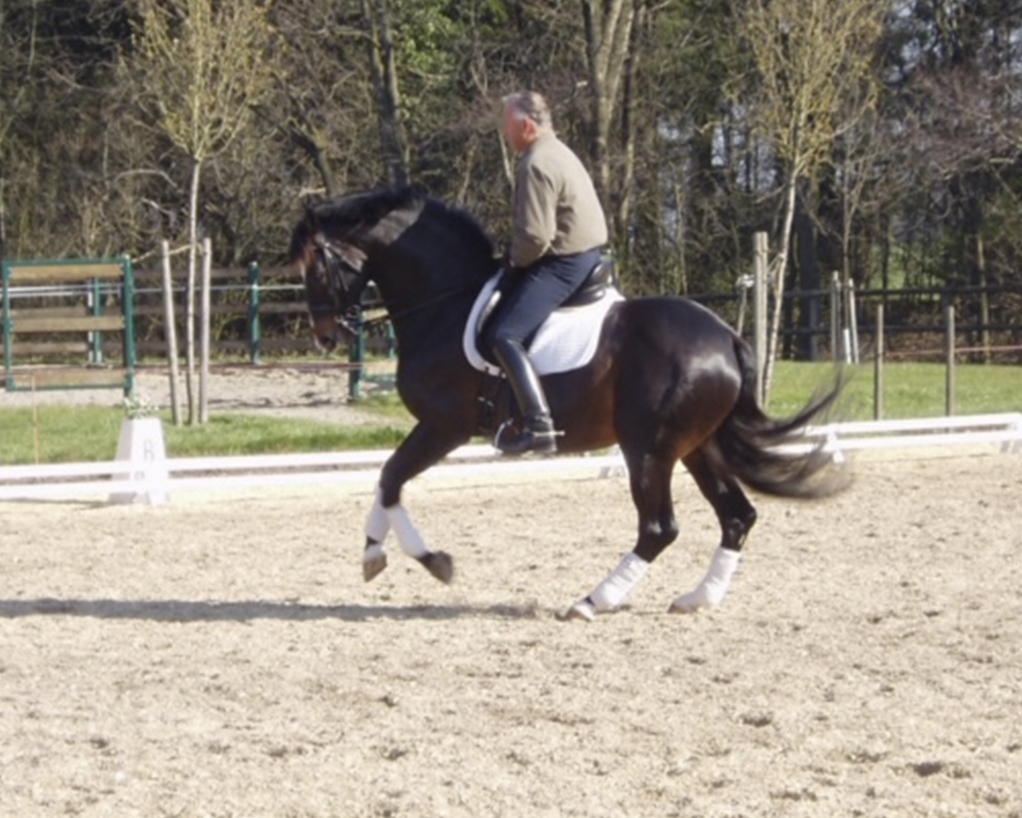
However, the quality of the steps was simply improved through the success of the transition, along with the gradual strengthening of the horse. Transitions between the collected and extended gait, along with the passage-piaffe- passage, were examples of such movements. Not to be underestimated was the extreme effort required of the horse to perform full extensions throughout the arena. Therefore, to strengthen and preserve longitudinal soundness, constantly repeating transitions covering less ground proved far more beneficial.
Regarding all the Grand Prix movements, training was purely aimed towards the gradual athletic development of the horse. One-time changes were seldom drilled, with more emphasis placed on the quality, expression, and perfect straightness of the single and less demanding sequences.
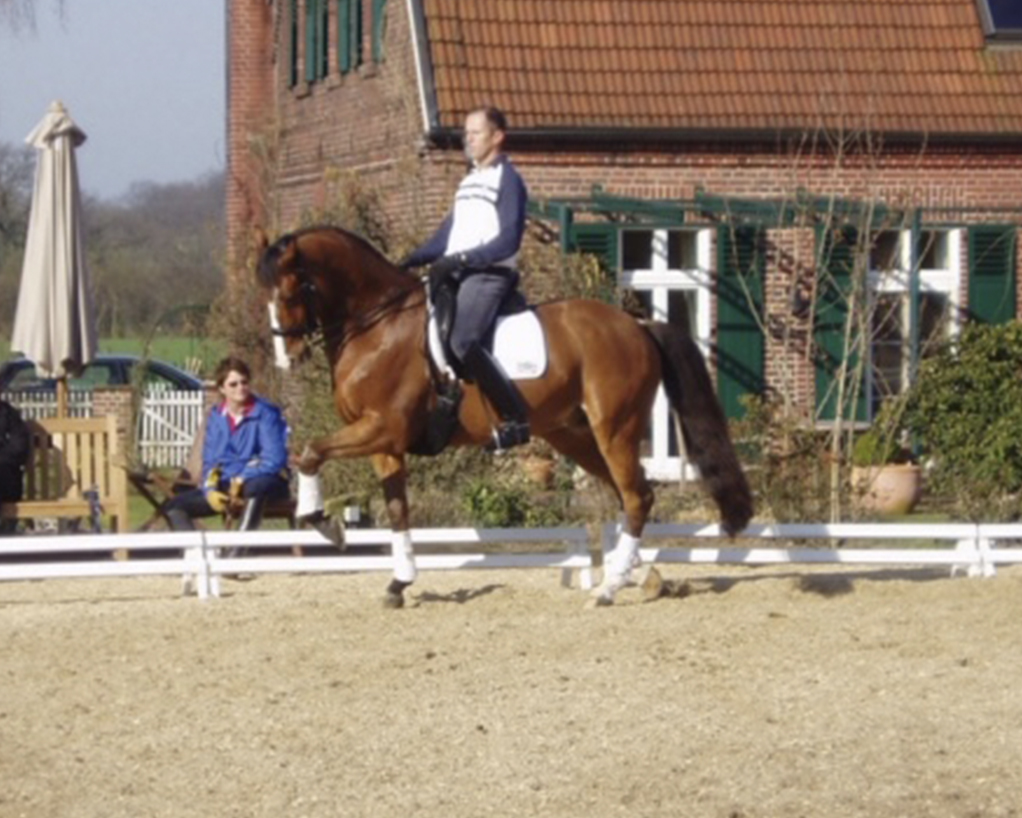
Passage-piaffe-passage placed huge demands in relation to strength. To increase carrying power, frequent transitions with minimal piaffe steps were performed, with Balkenhol once again insisting on perfect rhythm and straightness throughout. To allow the back to round, Claus stressed the lightening of the seat aids. On no occasion were the seat aids to be applied in a pushing manor, as this was regarded as working against the rising and suppleness in the back. He considered the correct position and precise application of the aids crucial to the successful training of the Grand Prix horse.
Total submission and response to the aids was always the focus of the training session. If, while schooling flying-changes, the horse became tight and anticipated, the change would not be performed. Only when the quality of the canter could be maintained, with the horse accepting the aids, would the change be re-introduced. The response to the driving and restraining aids was instant and dynamic. On no account did the riders use their heal or bring their hands back beyond the wither. This was not because the horses were bred with supernatural responses, but due solely to superb riding, timing, and training. Never were the senses of the dressage horse dulled through bad riding, or the incorrect application of the aids.
Balkenhol insisted that the contact had to be perfectly even in both reins. If the horse became uneven or unsteady within the contact this was incorrect, with the horse no longer straight and accepting both reins. When dealing with a contact problem, the reins were lengthened, NEVER shortened!
My favourite quote was “If a rider uses running reins to ‘help’ the horse, it is the rider himself that is needing the ‘help’.”
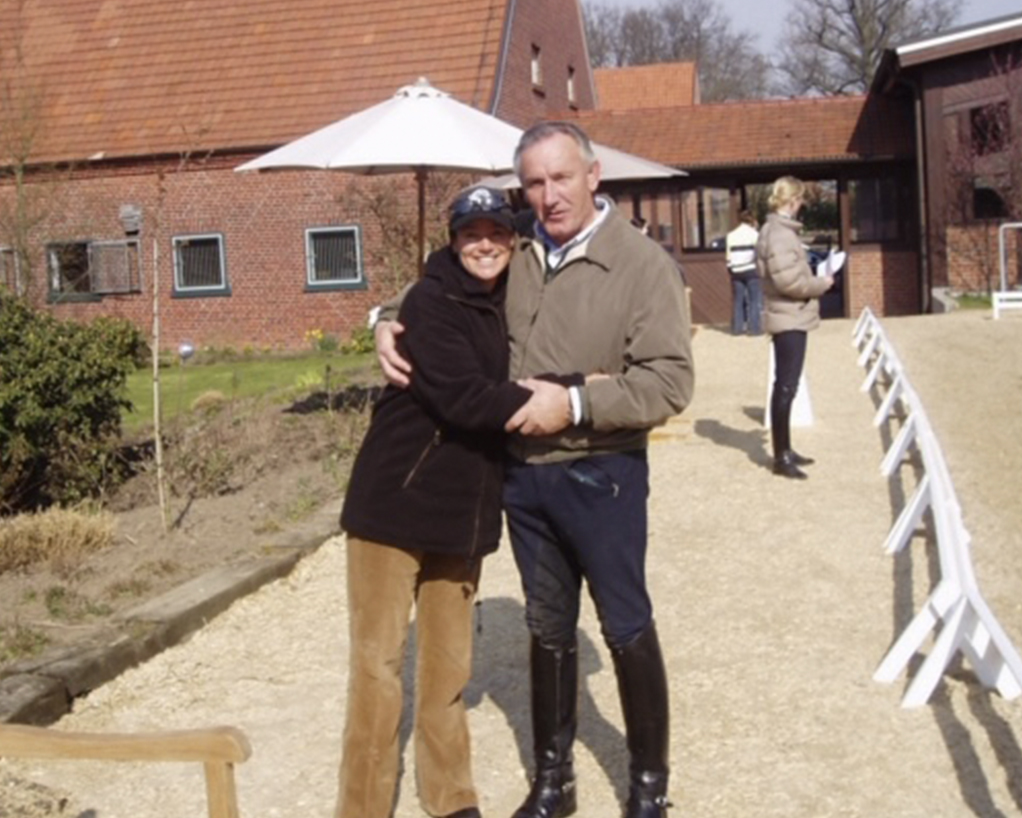
From intense observation throughout my time at Balkenhol’s it was noted that the horses were often ridden in a very deep, rounded outline. At times they were behind the vertical, but the horse was never short in the neck. The rein was never fixed, but elastic, with the feeling that the horse would follow the hand forward and out at any time. Balkenhol insisted that the horses be ridden alternating the frame, so that they would remain soft and over the back. Regularly testing self-carriage in all movements by either looping the rein forward or holding the reins in one hand while patting the horse in rhythm with the other hand, became common practice.
In Germany, young dressage horses were “broken in” between the ages of three and four years, with most of the horses closer to four, to ensure stronger development. Balkenhol did not approve of the German young horse classes, stating that the four year old horses were expected to look, in their development, like eight year olds, and he believed that four year old horses should not be working beyond novice level. Being educated by the ‘old masters’, he believes that the gradual development of the young horse through his first three years lays the foundation for his longevity and ability at Grand Prix. If this foundation is solid and the education correct, the horse should progress relatively quickly through the advanced work. (Interestingly, the age of the horses competing at this year’s final of the ‘World Cup’ averaged at twelve years, with only a handful of exceptionally talented and beautifully ridden younger horses. According to Claus, “It does not matter how good the raw material is, if the basic training and schooling is not correct, they will not make successful Grand Prix horses”. As an observer, I was amazed to see horses that were distinctly average-looking when warming up, become amazingly brilliant athletes later, solely due to correct schooling and superb riding.
Before leaving New Zealand, and while talking to my fellow dressage enthusiasts, I was warned about witnessing such breathtaking equines, and assured that my own mounts would never look the same. Luckily for my equine partners, this has proven far from the truth, as I now believe it is my horses who should be looking at me with scepticism!
The fact is that we do have some super quality horses. The question is whether we have the perfectly trained Grand Prix schoolmasters, the constant scrutiny and wisdom of the classical trainers, and the ability to ride technically correct at all times.
Maybe. Maybe not. Maybe just ‘not yet’!

One very positive aspect of our country is that our horses do not have to be confined to a loose box for twenty-four hours a day, thereby becoming prone to suffering from severally contracted heals, joint disease or regular bouts of colic. Instead, our horses enjoy the sun on their faces, rain on their ears, and the wind beneath their feet!
New Zealand is horse heaven, and Kiwis can do anything! The future of dressage in New Zealand is up to us.
Vanessa
Want to read more of Vanessa’s articles? Check these out
Improving your centre lines and halts
Aslo take a look at her online program where she shares all her tips ‘Master Your Dressage Movements’


